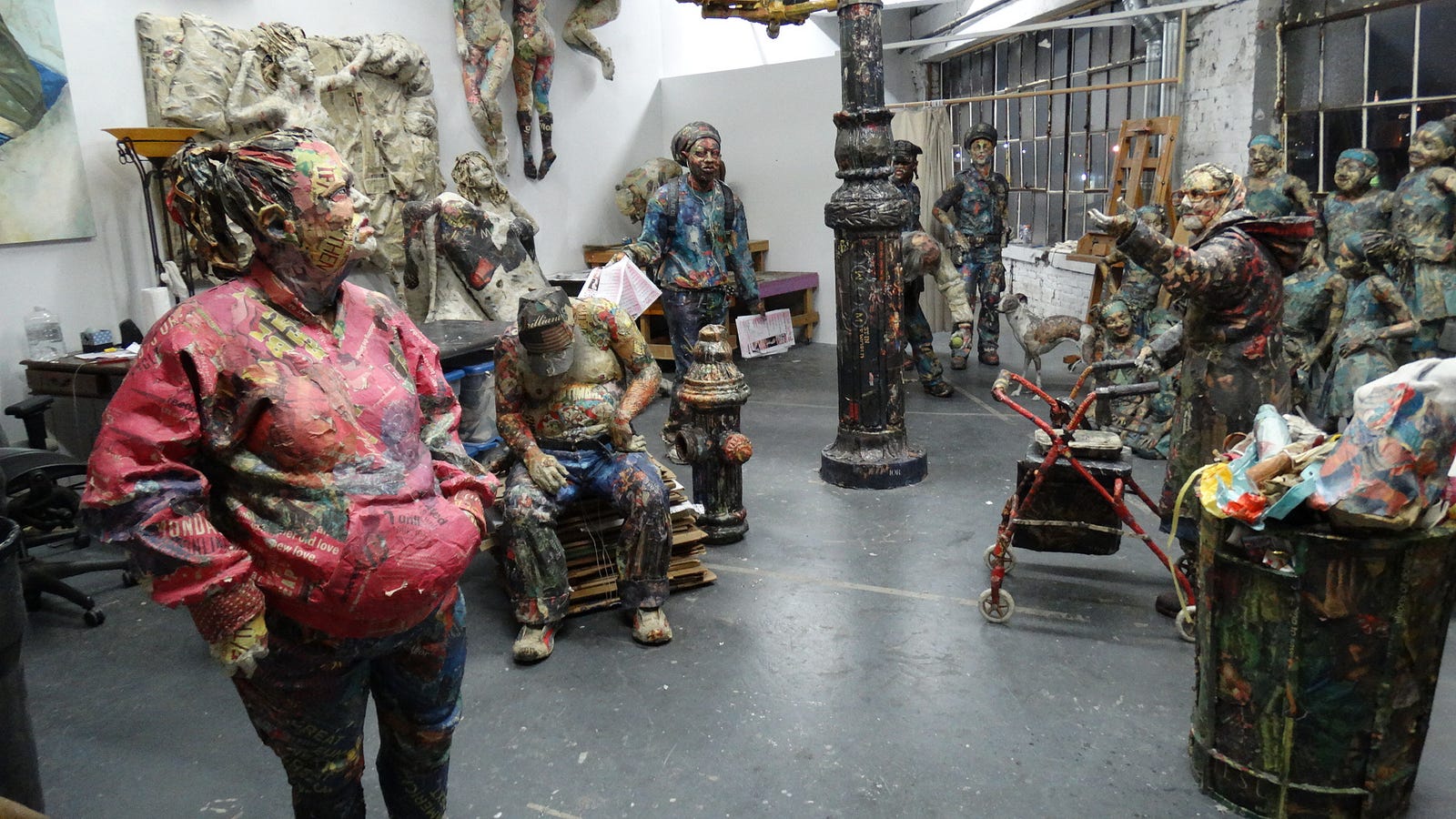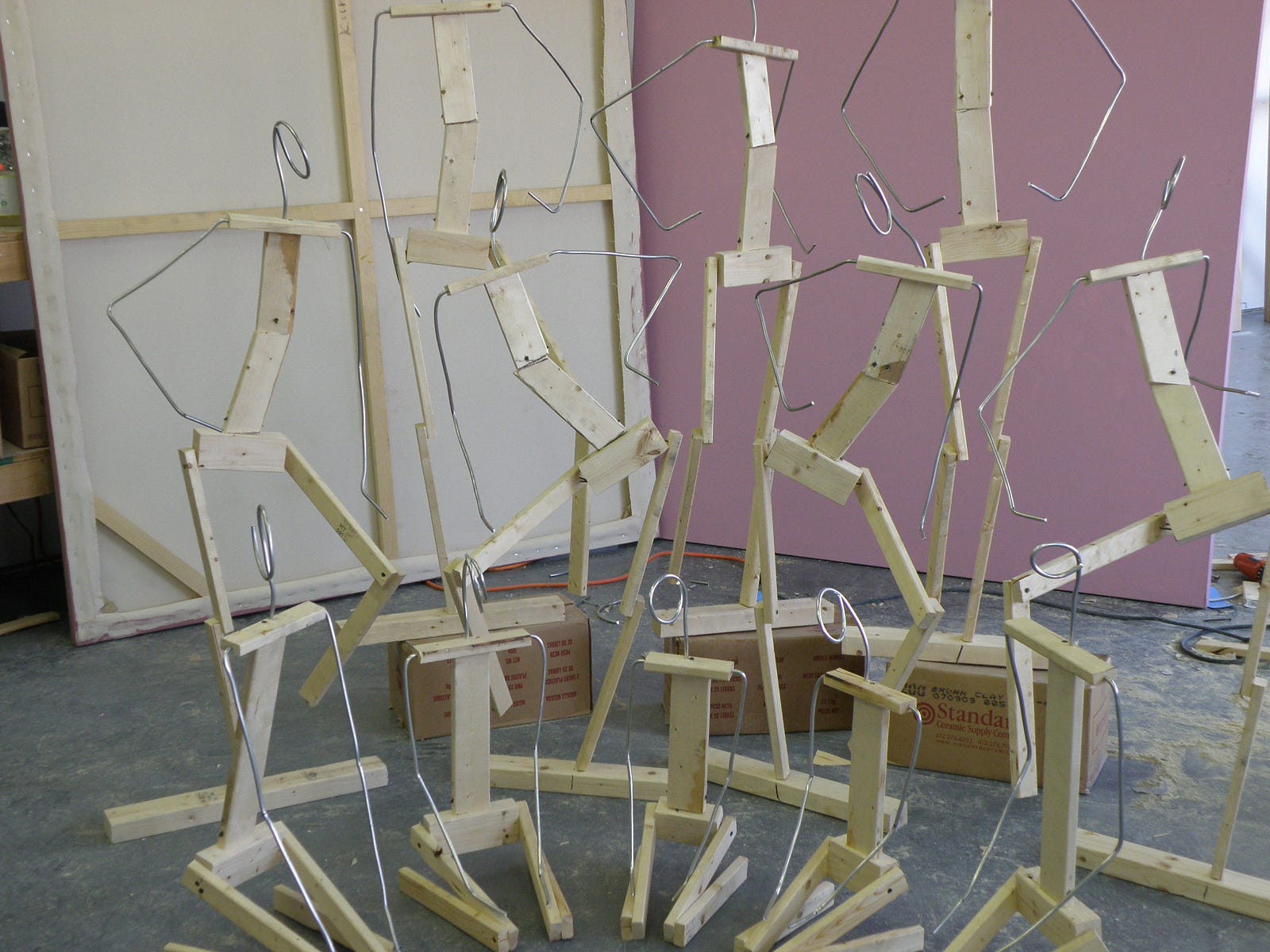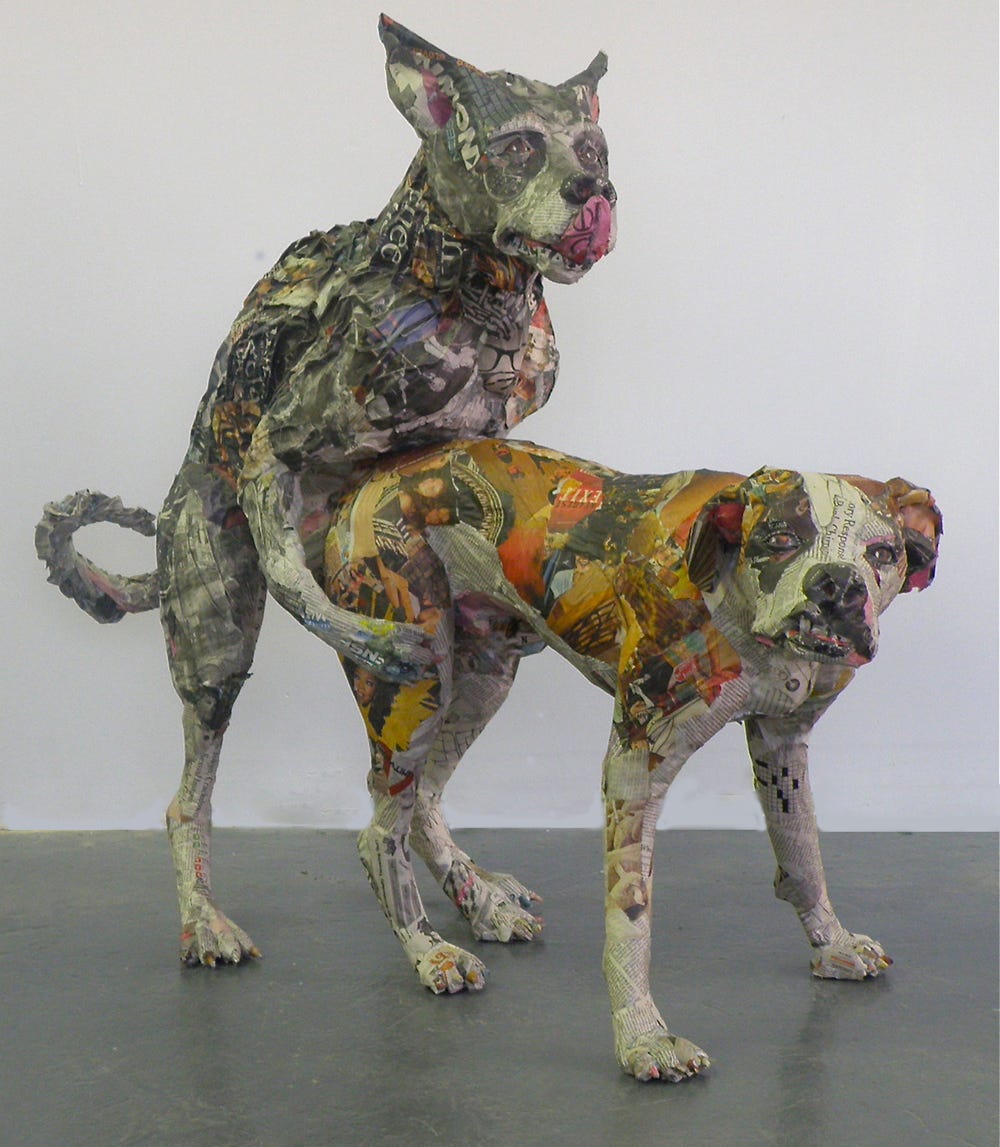 |
| Will Kurtz |
1. Tell us a bit about yourself — what defines you, as a person and as an artist?
I am quite empathetic toward all people and think we are all equal no matter what our race or gender or gender or economic status. I think my parents taught me to treat all people equally and this carries over to my work. I also find life a bit humorous and am at my best when I am not taking it too seriously. I am also very attached to animals and nature. Living in the city gives me inspiration with diversity of people, but makes me long for nature and to be grounded with the earth. I have lived in may beautiful places and try to make New York beautiful by how I see the urban decay.
2. I have been following your work for a long time — your sculptures seem, as if by magic, to be both completely spontaneous and meticulously planned. Can you talk about your creative process, from inception to completion of a piece?
My process is not planned in the beginning. I am not really sure what I am going to make next. When I see a person or an animal that really captures my attention, I take photos of them with my iPhone. With the people they are usual candid shots so they do not get uncomfortable and get upset or take a pose. There is not really a theme of who I chose as my subjects. I think they have to affect me emotionally in a sympathetic or maybe, humorous way. They are not always extreme but sometimes someone who might remind me of someone, like a relative from Michigan. I do gravitate toward everyday people who seem to have a story to tell. Once I am inspired by a photo, I begin the construction. It is really quite simple, where I make a life size armature out of wood for the legs and spine and wire for the arms and head. I use plaster from the knees down so they are bottom heavy. I then simply tape newspaper onto the armature and create a naked figure from the photograph. I then make the clothes out of newspaper. I leave no detail undone, from the soles of the shoes to the eyeballs and eyelids. I then cover the pieces with a collage from the newspapers and magazines.This is done in a very intuitive painterly way and almost like creating a 3 dimensional abstract painting. The realism of the figure allows me to be very expressive with the collage. At this point I do not put any paint on the figures. I like how the words and imagery tells a story about the figure which is sometimes coincidental and sometimes intentional.
3. When did you start experimenting with paper mâché as a medium? What about it makes for the perfect vehicle to express your ideas?
I actually used paper and cardboard many years ago when I was living in Michigan. I used to make big sculptures for a winter carnival where me and my kids would ride the sculptures down a ski hill. I have made sculptures out of many materials including stone, wood, Styrofoam, plaster, fiberglass and ceramics. I never really found something that fit may speed, scale and raw look that I was going for. Then during a fellowship at the New York Academy of Art I decided to go back to my earlier art and tried making a life size sculpture of my mother. It went up so fast and naturally that I knew I had it. It allowed me just the right amount of detail to express myself without being over fussy and overworking a piece. I also liked that it was from a recycled material and felt temporary, like we are on this earth. I also like how it fit in with the contemporary art scene. It is realism with my own twist.
4. The art world is a bizarre and sometime confusing place. What are some of your best experiences with the NYC art scene? What are some of your worst?
My best experience was my first solo show at Mike Weiss gallery. I was lucky enough to be represented by a major New York gallery right out of grad school. I was new to the whole art scene. I never had an undergraduate degree and was pretty much self taught up to the time I went to NYAA. I had some tough times preparing for my show, not only dealing with a controlling dealer but also financially. My show was a huge success. It was packed. People had to leave the gallery before more could come in. I sold about half of my pieces. I have had my share of bad experiences. The worst is probably figuring out how to have money to live on and time to make my work. There were times when I was trapped places because I could afford a train ticket or counted my change to buy a can of food. Those times test you as to why you are doing this. I have also had my share of bad group shows where nobody came. I try to stay positive though and know all successful artists have had to go through rough periods. I think those times define you as what type of artist you are more than the times when you are riding high.
 |
| Will Kurtz |
5. Do you have any advice for emerging artists? Perhaps something you wish someone told you when you were just starting out?
That is funny. In many ways I still feel like I am an emerging artist. I guess that insecurity never goes away. I would say to those just starting out to make what you really want. Never copy anyone or try to make what you think will sell. If you really enjoy what you are making it will come though in the piece. It is almost like being a child making art. You have to put yourself in that space. I would also tell them to try to get out there and meet people even if it makes you a bit uncomfortable. It will get easier the more you do it. Start out with studio visits with other artists. Also put together a body of work that is very distinctive and recognizable. At first you might be all over the place to find that style or feel that amazes you, but then stick with it and refine it. Most importantly, stick it out. You will be tested. Have thick skin and act confident even if you don’t always feel that way. You are in it for the long haul.
Living as an artist is a wonderful life. We are needed more than ever these days.
Landscape Architect-turned-Sculptor Will Kurtz on the Things that Inspire Him
Vincent Zambrano interviews Will Kurtz
Will Kurtz / Artist Spotlight
Trek Lexington in conversation with Will Kurtz
DE OTROS MUNDOS
Will Kurtz / La señora del perrito
Will Kurtz / Amantes
Will Kurtz / El taller del artista
Will Kurtz / La señora del perrito
Will Kurtz / Amantes
Will Kurtz / El taller del artista








No comments:
Post a Comment